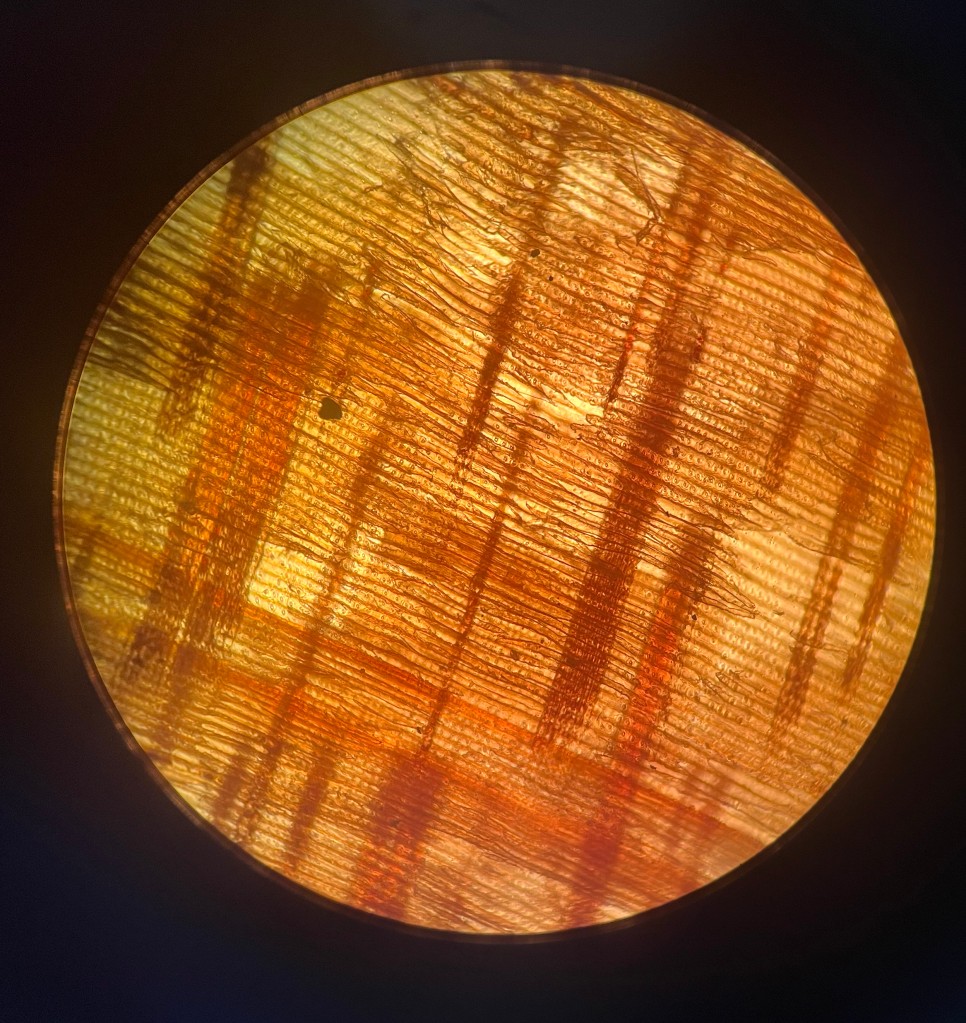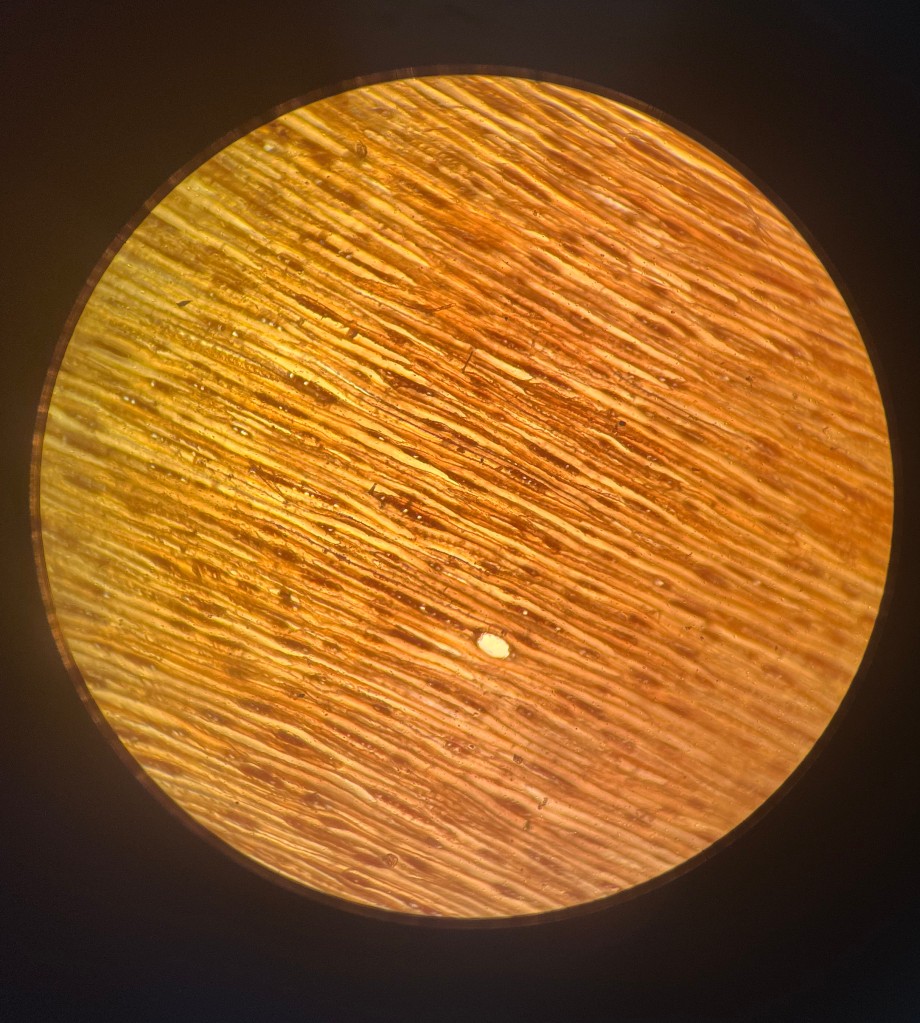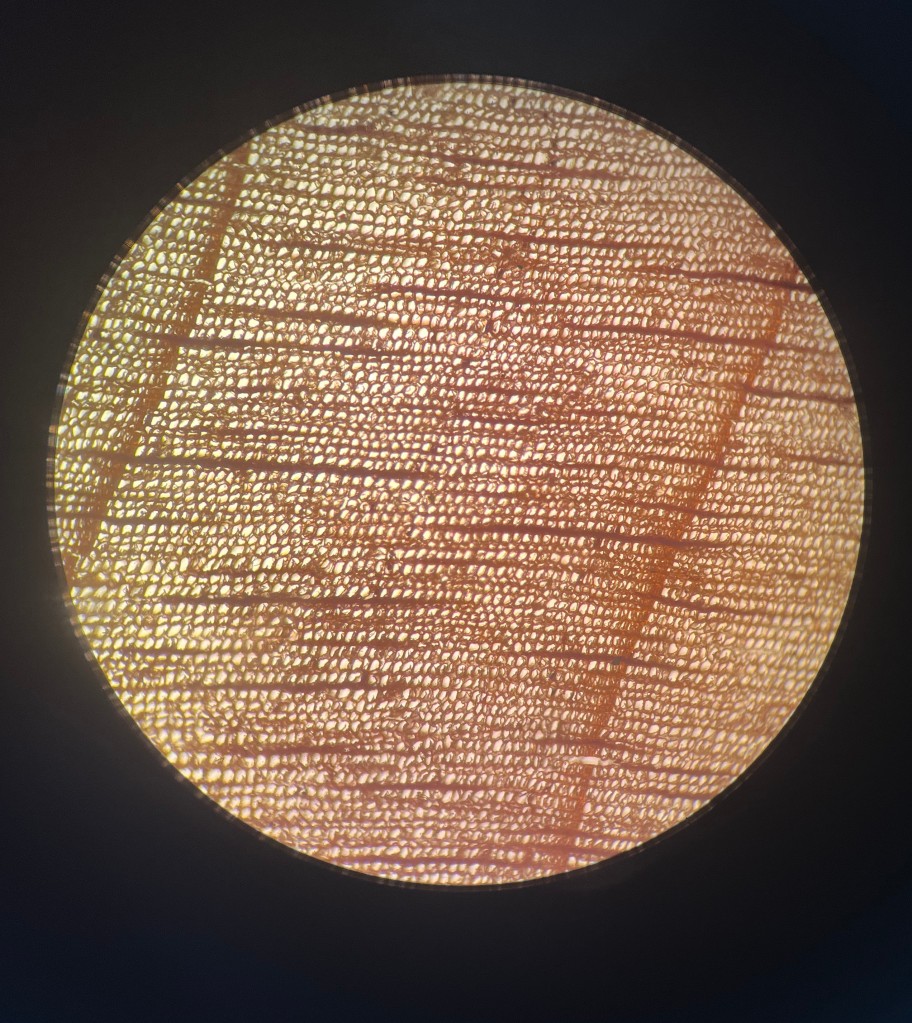[An Archaeologist’s Guide to British Species] #83: Cedar
In 2023, I am continuing to blog an A-Z compendium of human interactions with species in the British landscape. A list of references for information used in this series can be found here. An index of species covered so far can be found here.
Cedar
Cedrus spp.



L-R: radial longitudinal, tangential longitudinal and transverse sections of cedar (Cedrus sp.) wood x100 magnification. Photos by M Law (CC-BY-SA 4.0)
Evergreen coniferous trees, cedars flower in early autumn, the male catkins having a distorted cone shape, and the female being even smaller soft green cones. These take two years to ripen into the broad, squat cedar cones. Atlas cedar (Cedrus atlantica) comes from the Atlas Mountains of Morocco, and has bluish foliage. Lebanon cedar (C. libani) grows in the mountains of Lebanon and Syria, and has been planted in Britain for around 400 years. Cedar wood is a rich brown in colour, and the wavy outline of its annual rings gives it an attractive grain.
Imported cedar wood is present in the Roman port of London, and other sites in London, as well as in Roman Carlisle. Cedar wood is similar to other coniferous woods, although at very high magnification (x1000) of the radial longitudinal section, pits known as tracheid pits can be seen to have distinctive scalloped edges.